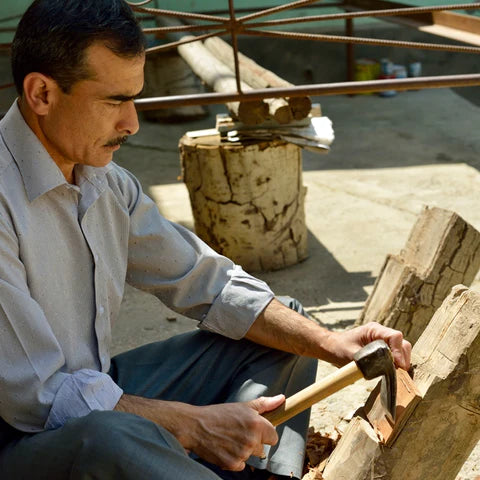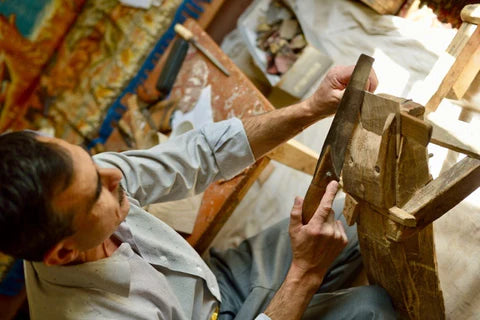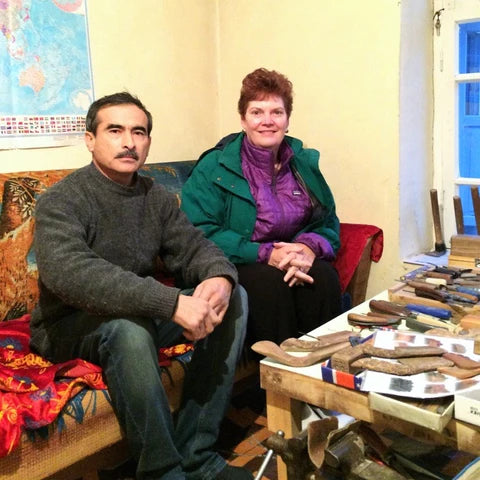Sodiq Zaripov - Tajikistan
Usto (respectful title for a “master” in Tajikistan) Sodiq has devoted his entire life to women’s hair. For many years he has produced his famous Tajik combs. His skill was highly prized even by foreigners, and in 2005 Usto Sodiq's combs received a quality certificate from UNESCO.
Every year at various fairs, the Master sells hundreds of his combs. Their cost varies, depending on the complexity of the work. Women clamor for these beautiful wooden accessories.
And he advises which tree would provide the best type of comb for each customer: walnut, apricot, pear, apple, hawthorn or boxwood. One look is enough for the Master to determine the structure of the customer’s hair. Furthermore, insists the Master, the part of the tree trunk from which a particular comb was cut plays a big role. Toward the middle of the trunk, the tree gets its soil and moisture, and hence combs from this part of the tree are more suitable for dry hair.

Walnut wood is particularly recommended for dry hair. As the Master explains, the wood gets darker closer to the center because of the liquid and oil, which gets even darker if the tree was grown at higher altitudes. But for oily hair, he cuts wood combs from along the edges of the trunk. He especially recommends apricot wood for oily hair, because of the lower oil content.
Master Sodiq does all his work by hand. He takes the stump, splits it into wedges, makes the form by hacksaw, and cuts the tines. To test their strength, the Master presses on them with great force using his finger. And if the comb utters its typical resonant sound, it is good. But if there was a mistake and any part of the comb breaks, it goes into the garbage.

Master Sodiq impregnates parts of the combs with propolis (a reddish resinous cement collected by bees from the buds of trees, used to stop up crevices in the hives, strengthen the cells, etc.), and afterwards with wood oil. The Master decorates successful combs with national ornaments that are traditional for Tajikistan. After he dries the combs in the sun, they are folded into boxes for sale.
His art is the main source of income for Usto Sodiq. Combs feed his family, which is not so small. Recently, Sodiq took on apprentices – students from the regional college of crafts. He teaches them that the shape of the comb should be the same as it was hundreds of years ago, and the pattern must be applied with love for the future owner of the comb, even if the apprentice will never see her. In these conditions, Sodiq tells us, the comb is not only useful, but also glorifies its owner, as the first beauty seen in her surroundings.



